Humans can easily understand the sentiments and emotions hidden behind the literal meaning of the words. However, the same is not true for AI-integrated language algorithms when we talk about comprehending human language. Nevertheless, with the advancement of technology, AI sentiment analysis tools are now able to interpret most of the emotions hidden in the text.
This AI-driven sentiment analyzer utilizes the power of machine learning algorithms and natural processing languages to understand the context in which certain words and sentences are used. In this article, we'll talk about the essential features of these tools to get the know-how of their functionality.
Part 1. What is Semantic Analysis?
Semantic analysis is a process of comprehending the hidden context in the natural language with the help of insights extraction, such as emotions and sentiments from disorganized data. With this capability, AI-powered systems can understand, interpret, and extract meaningful data from input sentences, reports, and other information sources.
You can further categorize this type of data analysis into two kinds. One is lexical-semantic analysis, in which the system understands the literal meaning of the words. On the other hand, compositional semantics analysis helps artificial intelligence comprehend how different words combine to formulate a meaningful sentence. Both these types combine to form the basis of AI sentiment analyzers.
Part 2. Benefits of Using AI Sentiment Analysis
AI sentiment analysis can automate the process of determining the sentiment or emotional tone behind a piece of text, such as a review, tweet, or customer feedback. Other than this advantage, there are numerous benefits to using AI semantic analysis tools for different operations:
- Promote Informed Decision Making: AI sentiment analysis is pretty helpful for businesses to gain insights into how customers perceive their products, services, and brands. Organizations can analyze feedback to understand customer sentiments, identify areas for improvement, and make informed decisions related to business growth.
- Aid in Market Research: Users can make use of the valuable insights into market trends and customer preferences provided by AI-powered systems. These AI-driven sentiment analyzers can also identify emerging trends from unstructured data sources like social media and online forums to further aid in market research.
- Improve Risk Management: Sentiment analysis also finds its application in the financial industry to monitor various reports and social media for sentiments that indicate changes in market sentiment. In addition to that, AI analyzers can utilize this data to do predictive analysis for future risk management.
- Assist Content Filtering: You can also make use of sentiment analysis in AI software that can assist in filtering content to categorize it as spam or inappropriate. AI algorithms perform this operation to automatically flag or block content that contains offensive language, ensuring a hate-free online environment.
- Manage Brand Reputation: If businesses can monitor sentiment around a brand in real-time, they can take timely actions to deal with negative reputation building around the brand.
Part 3. Drawbacks to Using AI Sentiment Analysis
No matter how many advancements the NLP algorithms have gone through, there are still some limitations in the comprehension of human emotions. Let's analyze some of the drawbacks of utilizing AI sentiment analysis tools to interpret the sentiments behind the words.
- Struggle with Sarcasm: These artificial intelligence algorithms usually struggle with the proper understanding of the context and sarcasm hidden behind the text. Misinterpretation of human sentiments can lead to the wrong classification of text and can affect the organization of the data.
- Lack of Contextual Understanding: When users utilize sentiment analysis tools for automating feedback analysis, they often complain that these tools lack a deep understanding of the world. AI is mostly unaware of the events happening in real-time, so its interpretation will lack comprehension of these events.
- Inaccuracies with Cultural Variations: Different human cultures and languages express emotions in various manners. AI sentiment analysis models trained on one language or culture do not work properly when applied to another, leading to inaccuracies in sentiment classification.
- Overgeneralized Interpretations: Some sentiment analysis models can overgeneralize different emotions because of a lack of training data. This can lead to poor performance on inputs containing new emotions or sentiments.
Irrespective of all these drawbacks, AI sentiment tools are still preferred to automate feedback analysis operations to boost the customer experience of the consumers.
Part 4. Top 5 AI-Driven Sentiment Analyzers
Now that you have good know-how about AI-driven sentiment analyzers, it is time to choose the best tool available to fulfill your analysis requirements. In this section, we'll provide you with detailed information about the top sentiment analysis tool to assist you in decision-making.
1. Idiomatic
Idiomatic is an AI-powered customer intelligence platform that resolves customer issues with the help of sentiment analysis algorithms. This AI sentiment analysis tool has the potential to identify the pain points and needs of customers across different social platforms. In addition, organizations can take help from this tool to improve customer services and product development operations.
Moreover, its AI-integrated algorithms can analyze data from customer support platforms, application reviews, communities, and even product reviews. After analyzing the sentimental insights from this unorganized data, Idiomatic presents the information in better understandable forms, including charts and tables.

Pros
- Excellent customer support to help users deal with software-related issues.
- Automate the process to save time and effort spent in doing analysis manually.
Cons
- Regular updates are not added to the system.
- Do not allow the addition of graphs and charts directly to PowerPoint.
2. MonkeyLearn
MonkeyLearn is an efficient AI-driven sentiment analyzer that assists organizations in getting valuable insights from disorganized feedback data. Users can dig deeper into complex datasets with the help of this multi-purpose analysis tool. Moreover, this AI is built on a ready-to-utilize language model, having the ability to be further trained to carry out sentiment analysis.
This all-in-one sentiment analysis tool categorizes the sentiment as positive, negative, or neutral to give a better idea about what kind of feedback you're receiving from customers. In addition to that, it lets you create customized charts, graphs, and other visuals to show data in visually engaging formats.

Pros
- Provides all-in-one data analysis solutions to users.
- Allows integration with third-party applications.
Cons
- Price is not affordable, especially for startups.
- The user interface needs some upgrades to avoid the learning curve.
3. Lexalytics
Lexalytics utilizes AI-powered NLP technology to transform scattered customer feedback into precious insights to improve business operations. This AI sentiment analyzer has the ability to analyze user data in over 29 native languages to help organizations get feedback from different regions. Furthermore, sentimental analysis ability also helps businesses determine the tone of comments posted by customers.
Additionally, users can also take advantage of built-in industry-specific packs to analyze customers based on the industry. These features further facilitate the AI-integrated system to better recognize the pain points, sentiments, and requirements of customers attached to diverse industries.
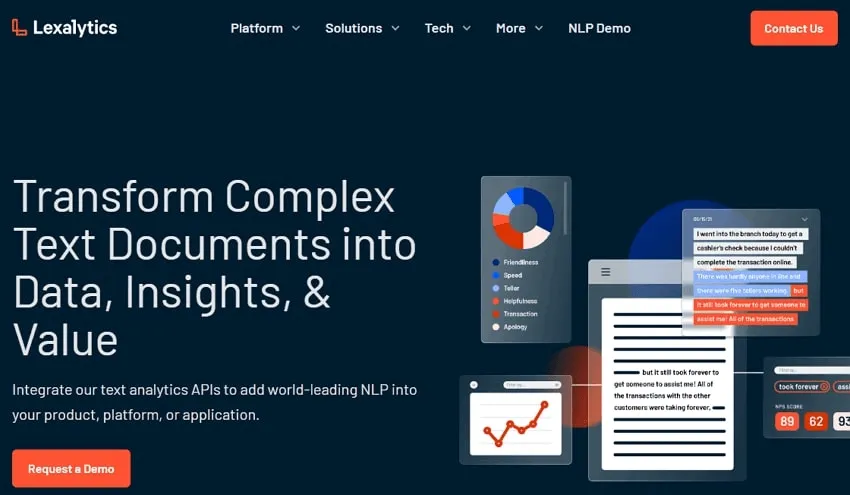
Pros
- Processing speed can touch up to 200 tweets per second while performing sentiment analysis.
- Integrates with third-party software such as Import.io and Diffbot.
Cons
- This AI-driven sentiment analyzer is expensive for SMEs.
- There are limited transactions available for a basic plan.
4. Akkio
Akkio is your efficient AI companion to analyze customer feedback and visualize survey sentiments without hassle. Businesses can make use of this AI sentiment analysis tool to streamline business operations with robust and efficient features. Moreover, this innovative tool has the capability to forecast revenue and predict customer behavior with predictive analysis.
Organizations can also interact with the algorithms to get real-time answers related to input data and output insights. Professionals belonging to marketing, customer support, and sales industries can also utilize this tool to present their data in the form of innovative charts and visuals.

Pros
- This AI sentiment analysis tool has an easy and intuitive layout.
- It provides you with the option to further scale the functionality.
Cons
- Predictive models lack accuracy on some occasions.
- Akkio needs to upgrade data acquisition features.
5. Polymer
Polymer is an easy-to-use AI-powered sentiment analysis tool that even lets beginners analyze human emotions hidden in the literal meanings of the words. Moreover, with the help of its state-of-the-art machine learning algorithms, organizations can easily keep track of the brand reputation. All they need to analyze is the sentiment of the feedback with the help of this AI-powered analyzer.
In addition to that, users can formulate creative visual representations of this analyzed customer data with just a few clicks. Furthermore, users are allowed to share the results of sentiment analysis via links and put the data in presentations directly.

Pros
- A good customer support team that listens to your problems.
- Cost-effective option for startups.
Cons
- It can only detect the literal meaning of the text.
- Like all other AI tools, it struggles to detect sarcasm in the input data.
Part 5. Bonus Tip: The Best PDF AI Analyzer
UPDF is the AI-powered analyzer. It provides you with two modes, namely "Ask PDF" and "Chat," to help businesses analyze the data copied and pasted in their text box. It has the latest GPT language model integrated into its system to help business owners better analyze data. With the help of the "Ask PDF" mode, users can inquire about any issues related to PDF text and its understanding.
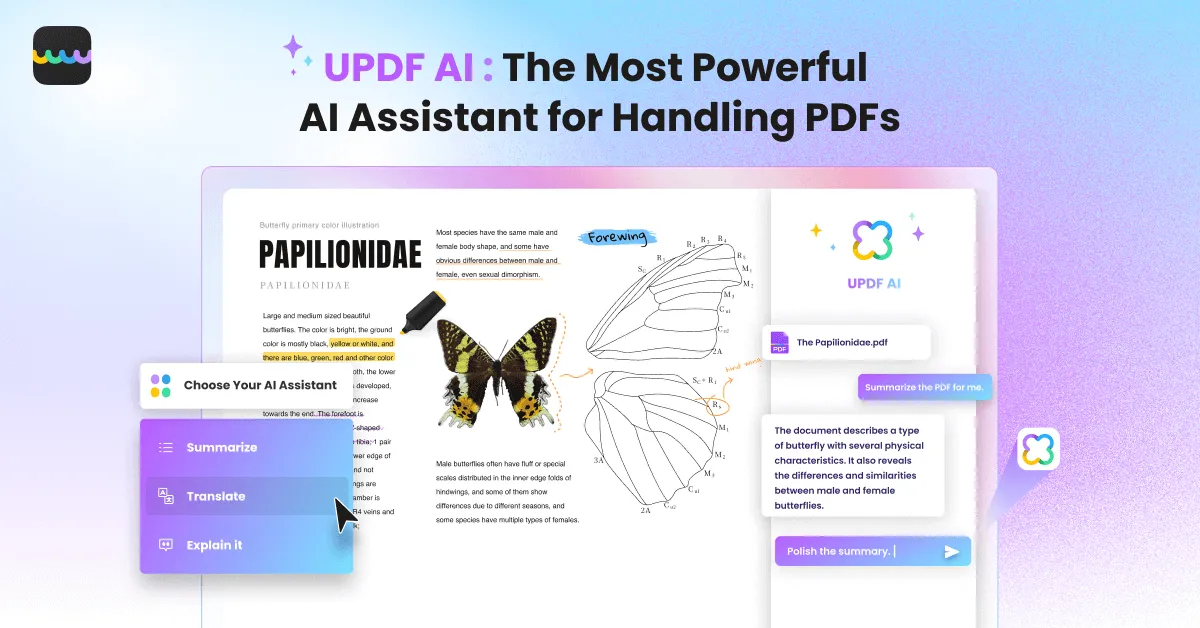
Simplified Steps to Perform PDF Analysis Operation via UPDF
As you've now realized the functionality of UPDF AI, you must be intrigued about how to perform PDF analysis with the AI of this tool. In this section, we'll try to give you the proper idea to carry out this operation. Let's see this step-by-step process to perform data analysis in an AI tool.
Step 1: Access the UPDF AI Tool
Once you've launched UPDF on your operating system, it is time to import the PDF containing data on which you want to perform data analysis. Then, proceed to hit the "UPDF AI" icon on the bottom right of your window. Afterward, a window will appear on your screen from where you can access the "Ask PDF" mode.
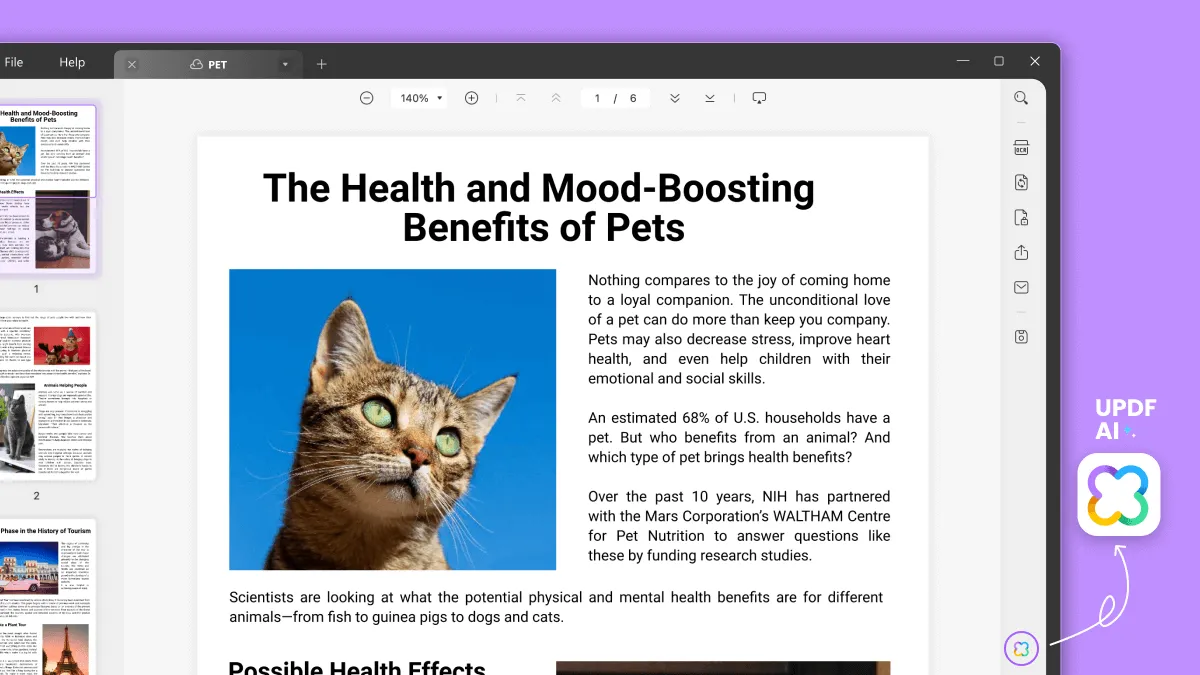
Step 2: Command UPDF AI to Analyze PDF
After entering the "Ask PDF" mode, look for the data in the PDF on which you want to perform the analysis. Then, command UPDF AI to perform the PDF analysis with the help of a well-written prompt. Furthermore, you can create customized prompts to get the best data analysis results from the tool.
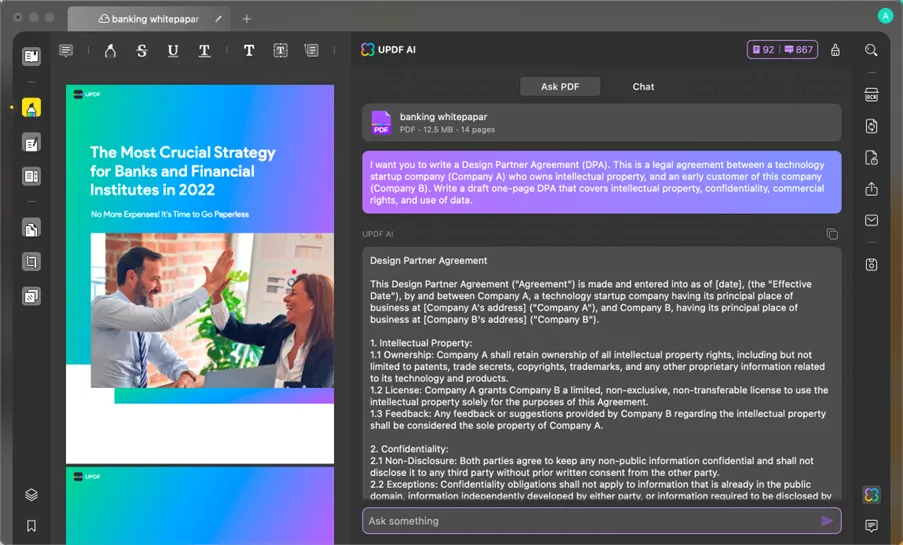
With all these simple-to-execute steps, UPDF AI has made AI PDF analysis easier than ever. You can use UPDF AI for free and if you used out all these AI PDF analysis, you can purchase UPDF AI Pro.
Final Words
We've tried to cover each and every aspect of AI sentiment analysis in this detailed guide. Now, if you're a marketing professional or small business owner trying to understand the psyche of the customers, all of these tools can help you perform basic semantic analysis operations.
However, for SMEs and large organizations alike, UPDF is the best choice with its multi-functional features and cost-effective pricing plans. Download UPDF AI now to get rid of the extra efforts required to analyze the PDF and automate the whole process.
Windows • macOS • iOS • Android 100% secure
 UPDF
UPDF
 UPDF for Windows
UPDF for Windows UPDF for Mac
UPDF for Mac UPDF for iPhone/iPad
UPDF for iPhone/iPad UPDF for Android
UPDF for Android UPDF AI Online
UPDF AI Online UPDF Sign
UPDF Sign Edit PDF
Edit PDF Annotate PDF
Annotate PDF Create PDF
Create PDF PDF Form
PDF Form Edit links
Edit links Convert PDF
Convert PDF OCR
OCR PDF to Word
PDF to Word PDF to Image
PDF to Image PDF to Excel
PDF to Excel Organize PDF
Organize PDF Merge PDF
Merge PDF Split PDF
Split PDF Crop PDF
Crop PDF Rotate PDF
Rotate PDF Protect PDF
Protect PDF Sign PDF
Sign PDF Redact PDF
Redact PDF Sanitize PDF
Sanitize PDF Remove Security
Remove Security Read PDF
Read PDF UPDF Cloud
UPDF Cloud Compress PDF
Compress PDF Print PDF
Print PDF Batch Process
Batch Process About UPDF AI
About UPDF AI UPDF AI Solutions
UPDF AI Solutions AI User Guide
AI User Guide FAQ about UPDF AI
FAQ about UPDF AI Summarize PDF
Summarize PDF Translate PDF
Translate PDF Chat with PDF
Chat with PDF Chat with AI
Chat with AI Chat with image
Chat with image PDF to Mind Map
PDF to Mind Map Explain PDF
Explain PDF Scholar Research
Scholar Research Paper Search
Paper Search AI Proofreader
AI Proofreader AI Writer
AI Writer AI Homework Helper
AI Homework Helper AI Quiz Generator
AI Quiz Generator AI Math Solver
AI Math Solver PDF to Word
PDF to Word PDF to Excel
PDF to Excel PDF to PowerPoint
PDF to PowerPoint User Guide
User Guide UPDF Tricks
UPDF Tricks FAQs
FAQs UPDF Reviews
UPDF Reviews Download Center
Download Center Blog
Blog Newsroom
Newsroom Tech Spec
Tech Spec Updates
Updates UPDF vs. Adobe Acrobat
UPDF vs. Adobe Acrobat UPDF vs. Foxit
UPDF vs. Foxit UPDF vs. PDF Expert
UPDF vs. PDF Expert


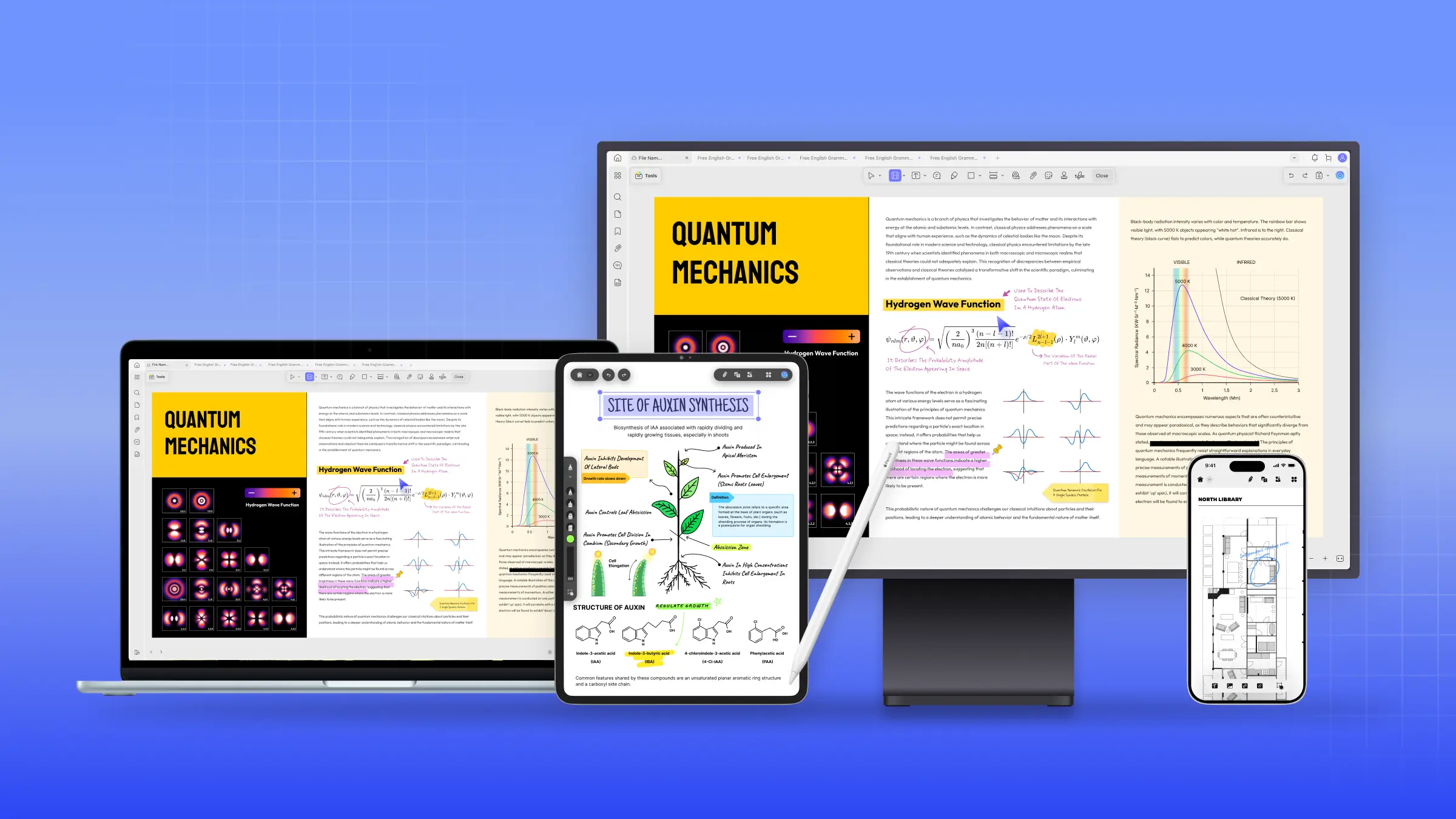





 Enola Miller
Enola Miller 
 Enya Moore
Enya Moore 
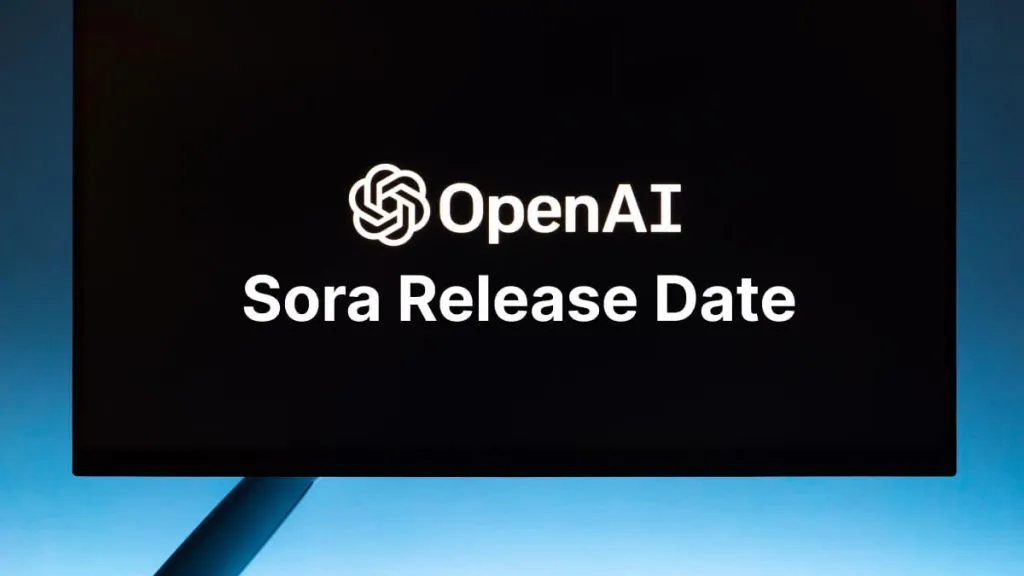
 Enrica Taylor
Enrica Taylor 
 Grace Curry
Grace Curry